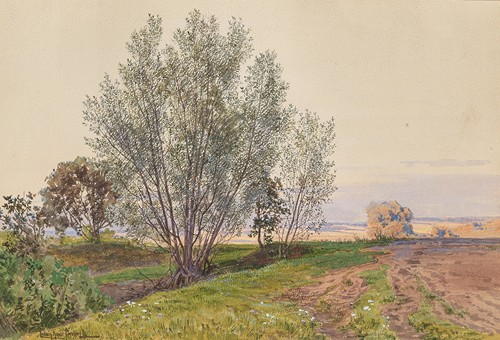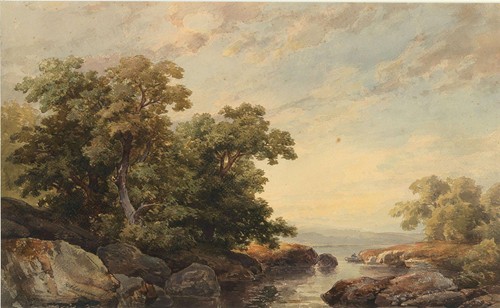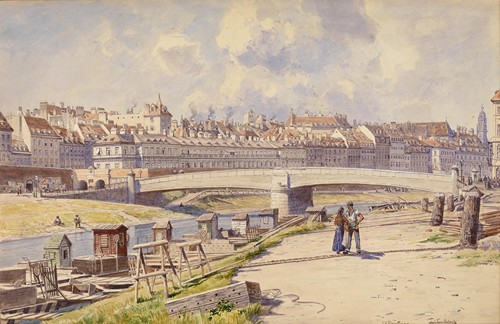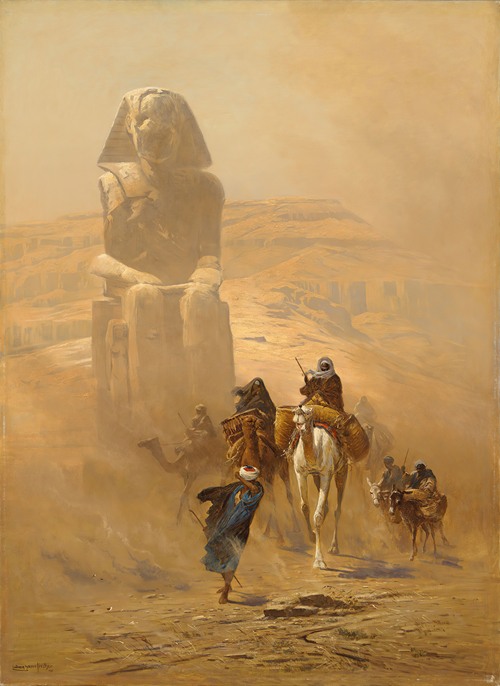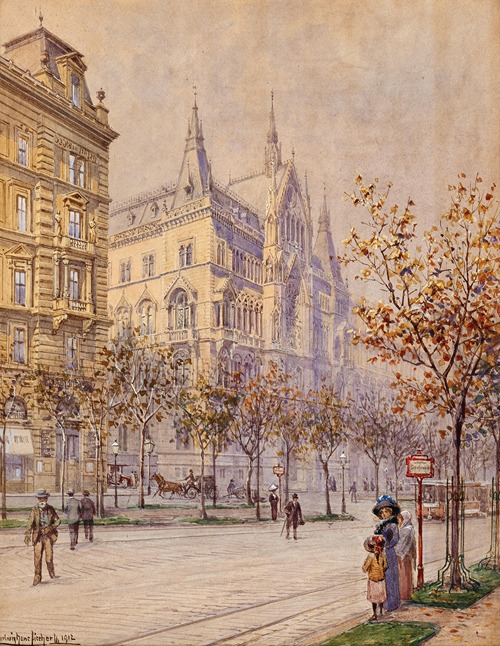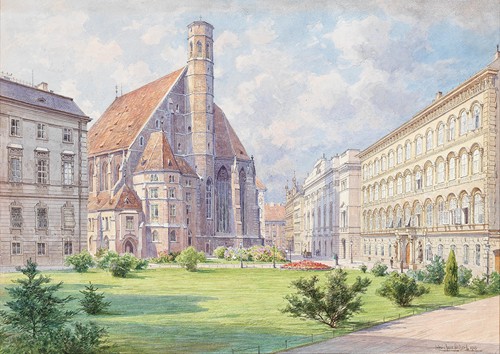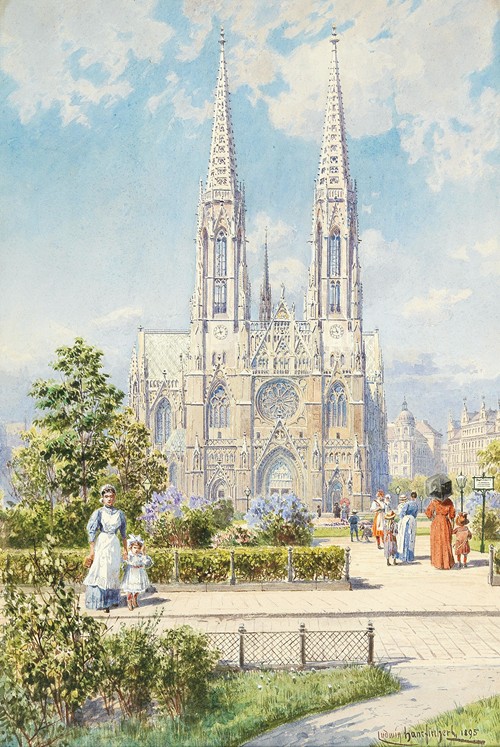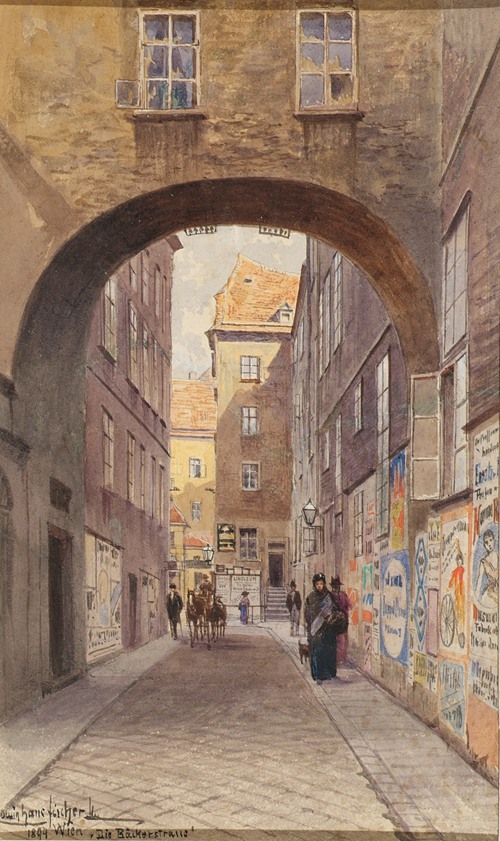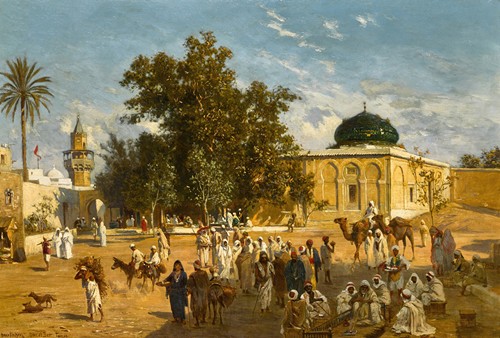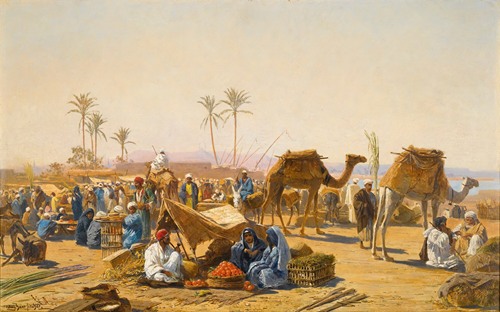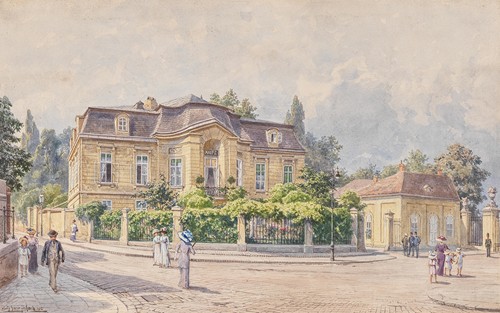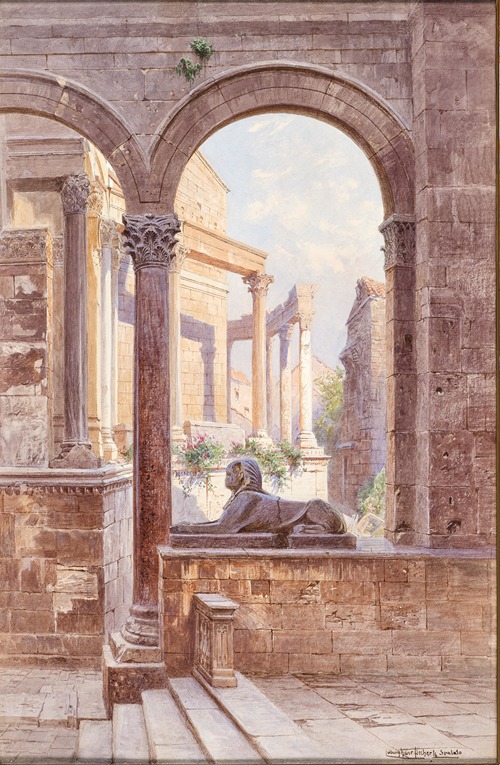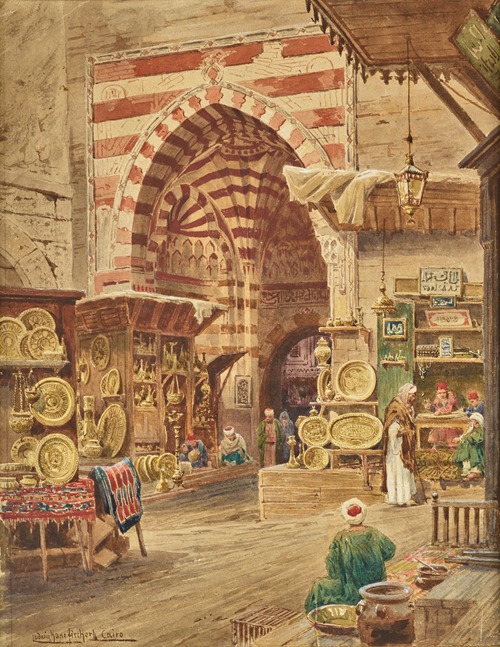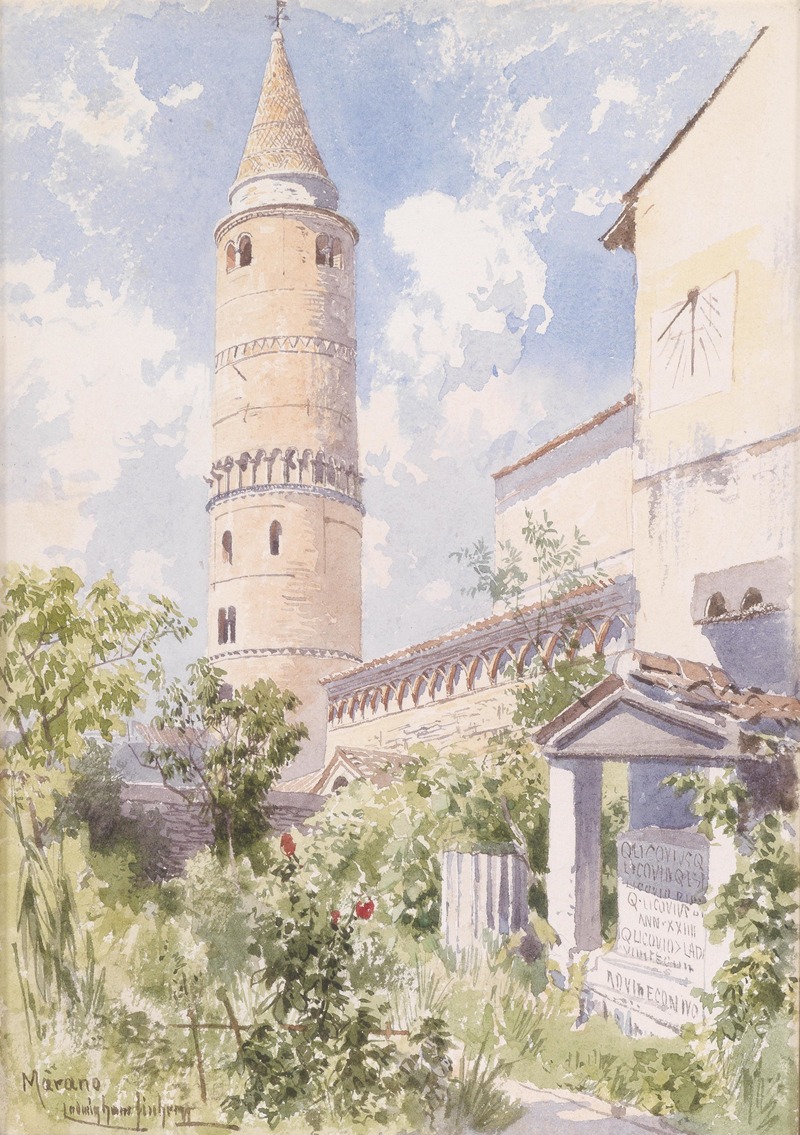
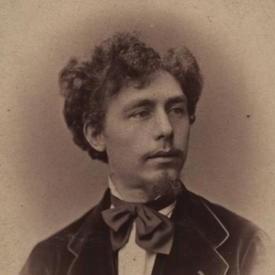
Ludwig Hans Fischer was an Austrian landscape painter, copper engraver, etcher and ethnologist. He was noted for his paintings of Oriental subjects, especially African and Indian women wearing traditional costume.
A pupil, at the Vienna Academy of Fine Arts, of Eduard von Lichtenfels in painting, of Louis Jacoby in engraving, and of William Unger in etching. After completing his studies, in around 1875, he travelled to Italy, Spain, Egypt, Tunisia, Libya, Egypt, Palestine and India before settling in Vienna. In 1879 he exhibited in Vienna and in the same year, he returned to the Orient. During these travels, he prepared many watercolours and sketches in situ.
In 1875, he received a grant to travel to the Middle East and Palestine; a journey that resulted in the publication of a sketchbook. In 1879, he published another sketchbook following his travels to Turkey, Jerusalem and the Dead Sea.
In addition to a number of oil paintings, he prepared nine large landscapes for the Vienna Museum of Natural History in 1889. Among his series of etchings and engravings, the set published as Historical Landscapes from Austria-Hungary is his most remarkable production. He also painted many water-colors, produced illustrations for a number of books. and designed a number of coins for the Numismatic Society of Vienna.
He was an active member of Vienna's arts culture, through his membership of art groups. He founded the Watercolourists Club in his home city.
Fischer was also writer. He published books on a variety of topics including the craft of painting and watercolours such as Die Technik der Aquarellmalerei [The Technique of Watercolour] first published in 1888, and Die Technik der Ölmalerei [The Technique of Oil Painting] first published in 1911. He wrote travel books, for which he provided the illustrations, and also published several ethnographic works including: Indischer Volksschmuck und die Art ihn zu tragen, 1890 [Indian Folk Jewelry and How to Wear It], and Eine neolitische Ansiedelung in Wien (Ober-St. Veit), Gemeindeberg [A Neolithic Settlement in Vienna (Upper St. Veit)], 1898.
